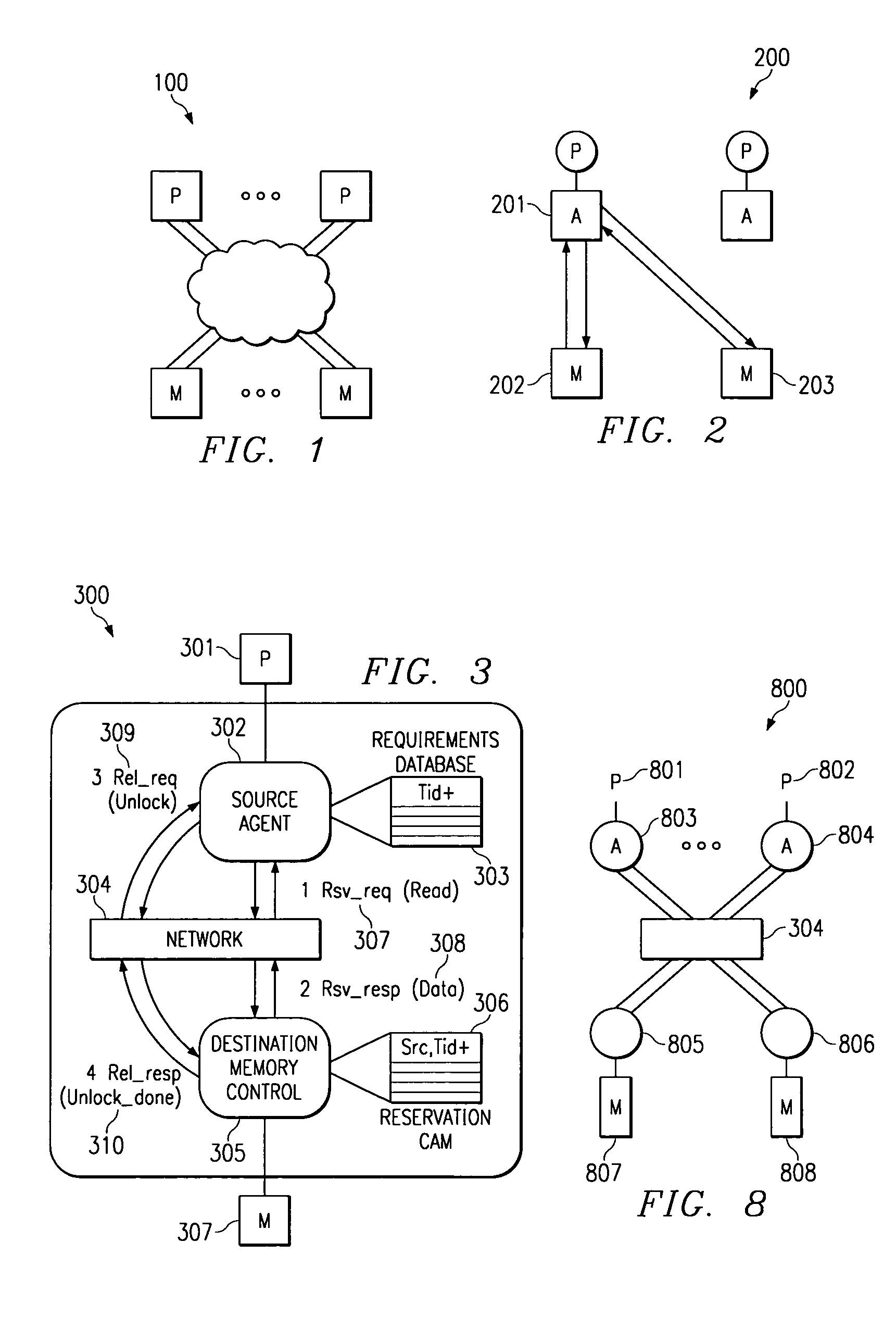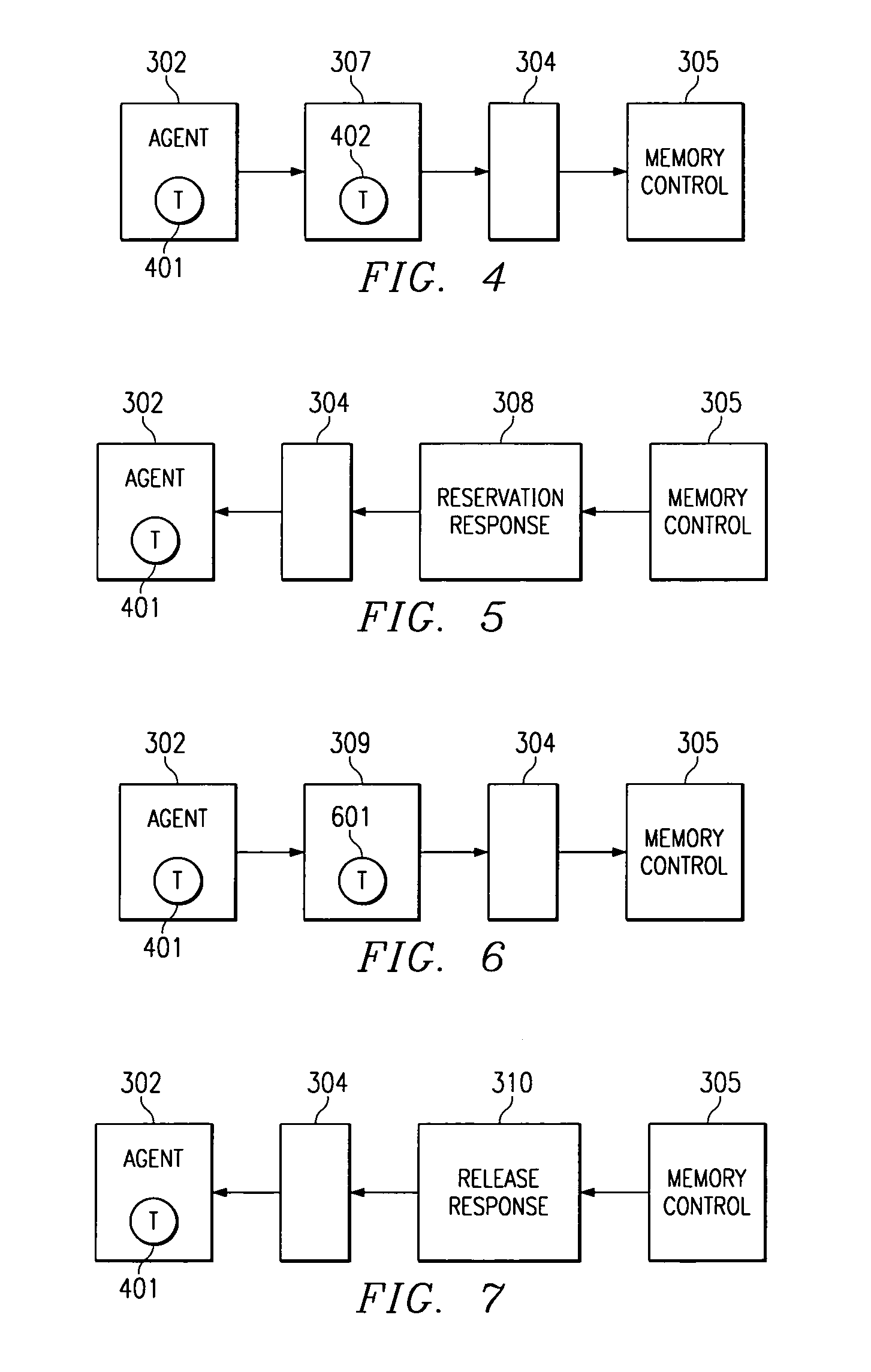Protocol for insuring exactly once semantics of transactions across an unordered, unreliable network
a technology of unreliable network and transaction semantics, applied in the field of transaction semantics assurance exactly once semantics of transactions across an unordered, unreliable network, can solve the problems of incomplete transmission failure, inability to resolve, and generally become more difficult and complex communication management, so as to achieve efficient processing and greater certainty regarding the status of transactions
- Summary
- Abstract
- Description
- Claims
- Application Information
AI Technical Summary
Benefits of technology
Problems solved by technology
Method used
Image
Examples
Embodiment Construction
[0042]FIG. 3 depicts a transaction scheme employing a destination memory control device 305 according to a preferred embodiment of the present invention. In a preferred embodiment, source agent 302 is associated with processor 301. Requirements database 303 preferably cooperates with source agent 302 to store the status of transactions and transaction data packets. Network 304 is generally a multiple source, multiple destination computer network but may alternatively be a single device, such as a router, interposed between a single source device and a single destination device. In another alternative embodiment, network 304 may be a local area network or wide area network.
[0043]In a preferred embodiment, Content Addressable Memory (CAM) 306 is a memory device which allows any one of its entries to be written to by an external device. CAM 306 preferably includes a feature wherein, when presented with the identification of a source device, or other external device, and an identificati...
PUM
 Login to View More
Login to View More Abstract
Description
Claims
Application Information
 Login to View More
Login to View More - R&D
- Intellectual Property
- Life Sciences
- Materials
- Tech Scout
- Unparalleled Data Quality
- Higher Quality Content
- 60% Fewer Hallucinations
Browse by: Latest US Patents, China's latest patents, Technical Efficacy Thesaurus, Application Domain, Technology Topic, Popular Technical Reports.
© 2025 PatSnap. All rights reserved.Legal|Privacy policy|Modern Slavery Act Transparency Statement|Sitemap|About US| Contact US: help@patsnap.com



